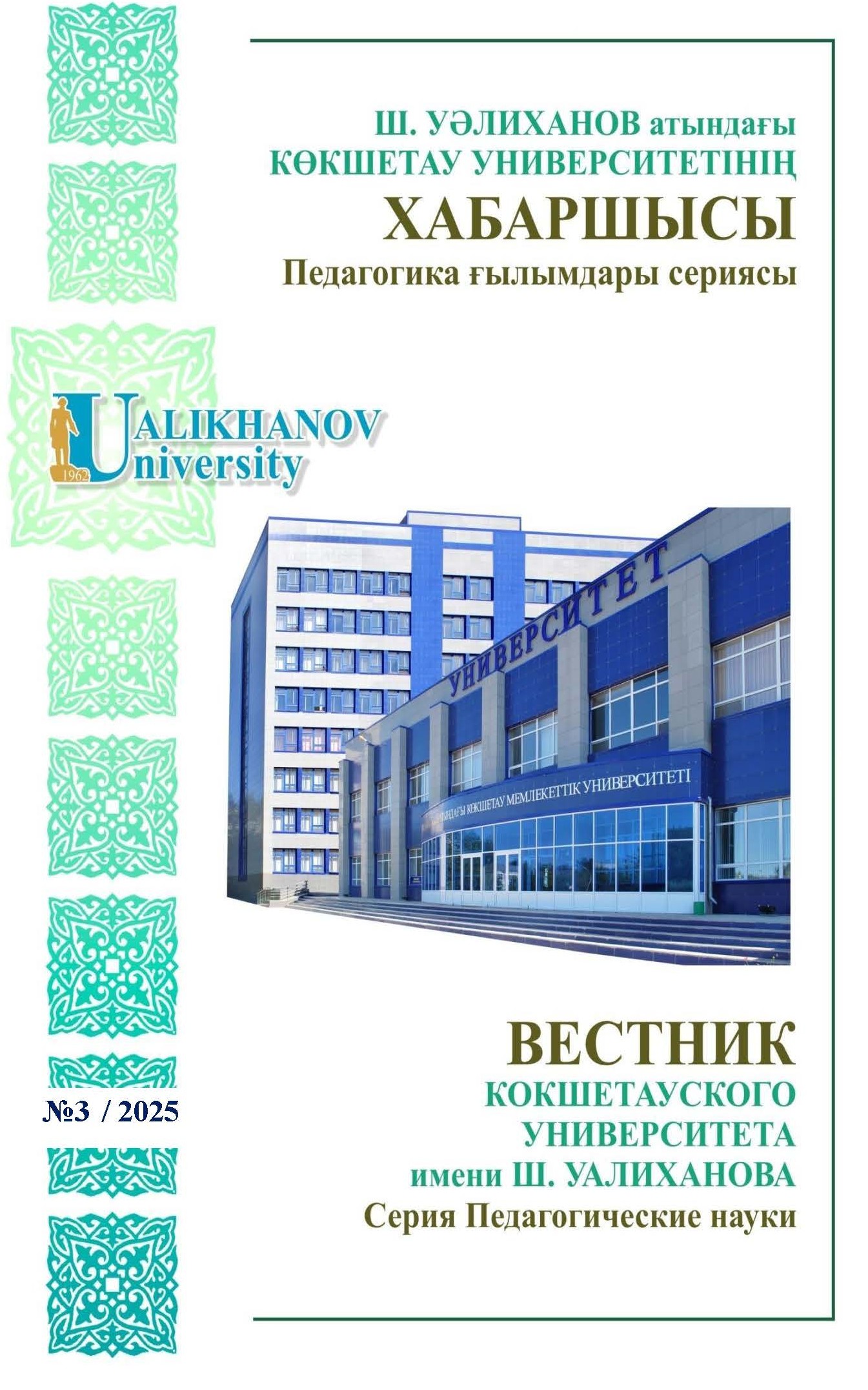ТЕОРЕТИЧЕСКИЕ ОСНОВЫ ТЕХНОЛОГИИ 5Е В STEAM-ОБРАЗОВАНИИ
DOI:
https://doi.org/10.59102/pedagogical/2025/iss3pp84-95Аннотация
В этой статье рассматривается использование технологии 5E (Вовлечение, исследование, объяснение, разработка, оценка) STEAM образования. Технология применялась на различных занятиях некоторых стран как эффективное средство развития критического мышления учащихся. Представлены теоретические основы данной педагогической модели, ее интеграция с междисциплинарным подходом STEAM (наука, технология, инженерия, искусство, математика), а также результаты практической реализации в средних школах и колледже различных стран. В ходе исследования было выявлено, что внедрение технологии 5E способствует активному вовлечению школьников в учебный процесс, развитию аналитических и исследовательских навыков, а также формированию устойчивого интереса к естественнонаучным дисциплинам. Сделан вывод о том, что систематическое применение данной методики необходимо для повышения качества химического образования и развития интеллектуального потенциала школьников.
Ключевые слова:
STEAM-образование, модель 5Е, критическое и креативное мышление, химияБиблиографические ссылки
http://adilet.zan.kz/rus/docs/U1600000205?utm_source=chatgpt.com
Lovat, T. J. (2003), “The role of the teacher: Coming of age?”, Australian College of Educators, Sydney.
Eze, D. N. (2010), “Effective science teaching: A panacea for meaningful learning”, Magnet Business Enterprises, Enugu.
Ausubel, D. P. (2000), “The acquisition and retention of knowledge: A cognitive view”, Kluwer Academic, Dordrecht. DOI: https://doi.org/10.1007/978-94-015-9454-7
Vignarajah, S., Luan, W. S., and Abu Bakar, K. (2008), “Teaching and learning chemistry in secondary schools: A Malaysian perspective”, Journal of Science and Mathematics Education in Southeast Asia, vol. 31, no. 1, pp. 41–53.
Peterson, P. L., Fennema, E., and Carpenter, T. P. (2008), “Teachers’ knowledge and understanding of students’ mathematical thinking”, Journal for Research in Mathematics Education, vol. 39, no. 4, pp. 370–393.
Bybee, R. W. (2009), “The BSCS 5E instructional model and 21st century skills”, BSCS, Colorado Springs, CO.
Rutherford, F. J., and Ahlgren, A. (1990), “Science for all Americans”, Oxford University Press, New York, NY.
Zavesky, K.M.T. (2022), “Impacts of the 5E instructional model in secondary schools”, Journal of Education and Instructional Studies, vol. 10, no. 2, pp. 112–118.
Zakaria, E., Solfitri, T., Daud, Y., and Abidin, Z. Z. (2013), “The effect of cooperative learning on students’ mathematics achievement in secondary school”, International Journal of Mathematical Education, vol. 4, no. 2, pp. 98–100. DOI: https://doi.org/10.4236/ce.2013.42014
Williams, P. (2019), “Principles of teaching and learning in STEM education”, AIP Conference Proceedings, vol. 2081, no. 1, Article 020003. https://doi.org/10.1063/1.5094009 DOI: https://doi.org/10.1063/1.5093996
Bulbul, T. (2010), “Exploring the 5E model in science education”, Journal of Turkish Science Education, vol. 7, no. 3, pp. 134–145.
Lawson, A. E., and Thompson, L. D. (1995), “Formal reasoning ability and misconceptions concerning genetics and natural selection”, Journal of Research in Science Teaching, vol. 25, no. 9, pp. 733–746. https://doi.org/10.1002/tea.3660250904 DOI: https://doi.org/10.1002/tea.3660250904
Bybee, R. W. (1997), “Achieving scientific literacy: From purposes to practices”, Heinemann, Portsmouth, NH.
Bybee, R. W., Taylor, J. A., Gardner, A., Van Scotter, P., Carlson Powell, J., Westbrook, A., and Landes, N. (2006), “The BSCS 5E instructional model: Origins, effectiveness, and applications”, BSCS, Colorado Springs, CO.
Sotáková, I., and Hanáčková, I. (2023), “The effect of 5E model on cognitive processes and students’ attitudes towards chemistry”, Journal of Science Education, vol. 25, no. 1, pp. 22–30.
Seven, S., Tiryaki, S., and Ceylan, H. (2017), “The effect of the 5E learning cycle model and cooperative learning method in the constructivist approach on academic success and students’ attitude towards subject of ‘Sound’”, Journal of Education, Society and Behavioural Science, vol. 20, no. 3, pp. 1–9. https://doi.org/10.9734/JESBS/2017/35152 DOI: https://doi.org/10.9734/JESBS/2017/35152
Hussain, I., Mahmood, A., and Kayani, M. M. (2023), “Effects of 5E’s instructional model on academic achievement in 10th grade chemistry”, International Research Journal of Management and Social Sciences, vol. 4, no. 4, pp. 123–130.
Resmol, K., and Leasa, M. (2022), “The effect of learning cycle 5E + Powtoon on students’ motivation: The concept of animal metamorphosis”, Jurnal Pendidikan Biologi Indonesia, vol. 8, no. 2, pp. 121–128. DOI: https://doi.org/10.22219/jpbi.v8i2.18540
Tegegne, T. A., and Kelkay, A. D. (2021), “Comparative study of using 5E learning cycle and the traditional teaching method in chemistry to improve student understanding of water concept: The case of primary school”, Curriculum & Teaching Studies, vol. 13, no. 1, pp. 1–10. DOI: https://doi.org/10.1080/2331186X.2023.2199634
Опубликован
Как цитировать
Выпуск
Раздел
Лицензия
Copyright (c) 2025 Вестник Кокшетауского университета имени Ш.Уалиханова. Серия Педагогические науки

Это произведение доступно по лицензии Creative Commons «Attribution-NonCommercial» («Атрибуция — Некоммерческое использование») 4.0 Всемирная.


